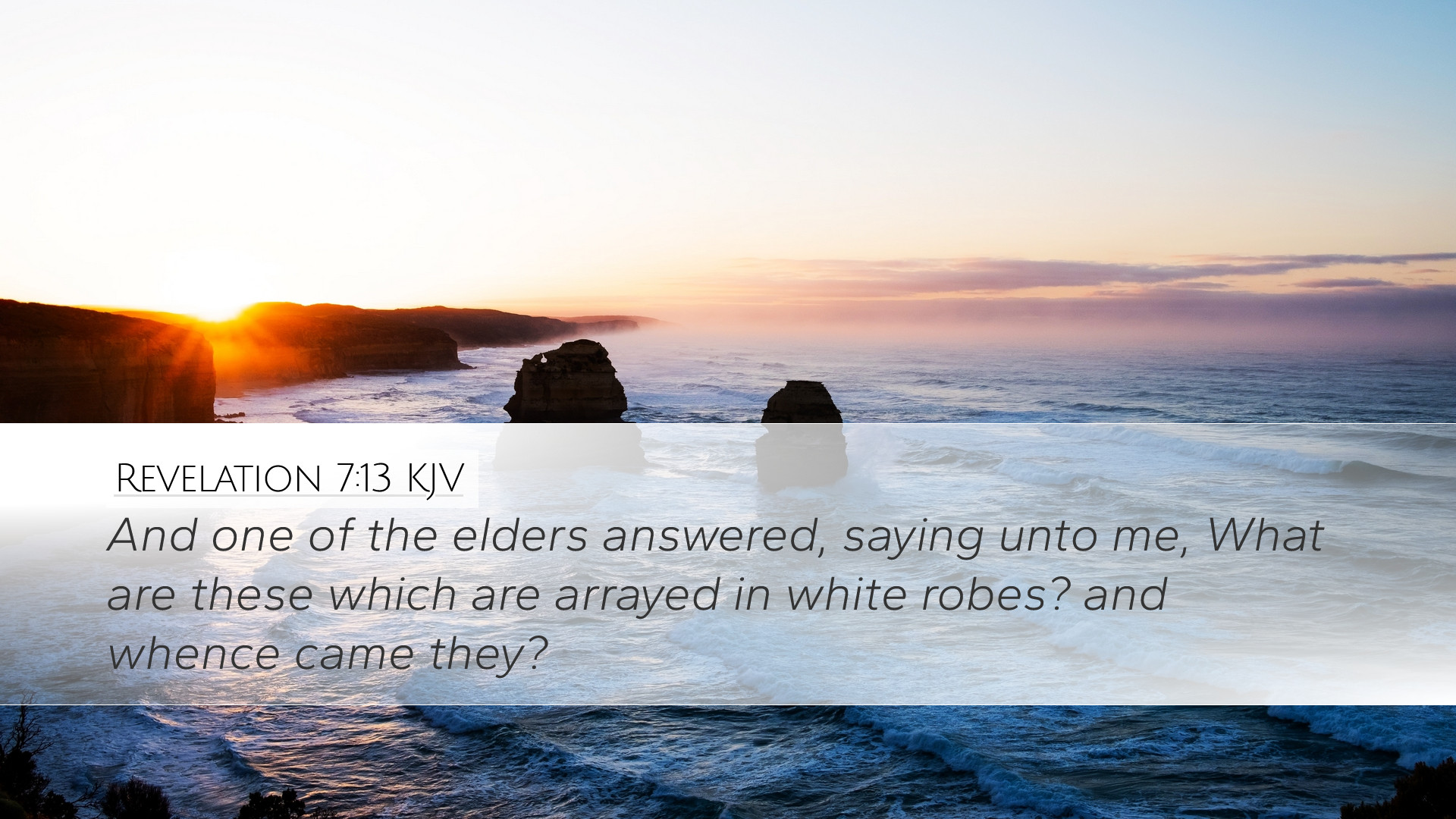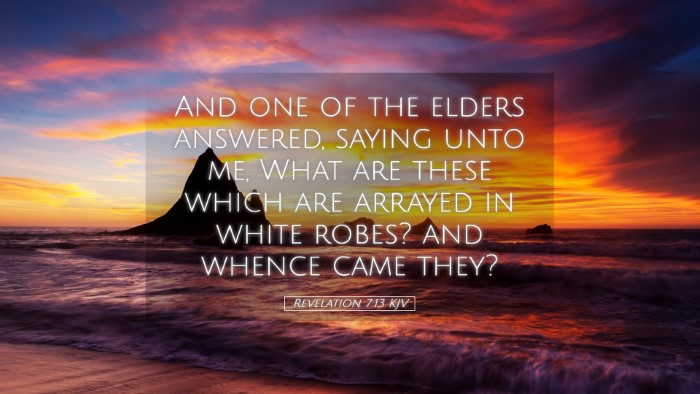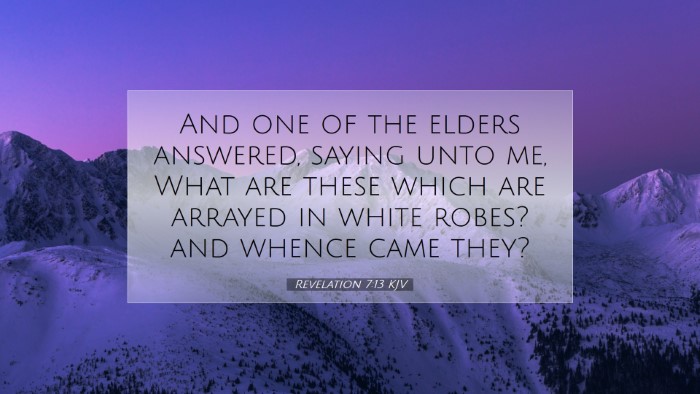Commentary on Revelation 7:13
Verse Context: Revelation 7:13 states, “Then one of the elders answered, saying unto me, What are these which are arrayed in white robes? and whence came they?” This verse occurs within the larger narrative of the Book of Revelation, specifically in a section where the sealed of Israel and the great multitude are being discussed.
Exegesis and Theological Implications
This verse is pivotal as it prompts a question that leads to deeper theological reflection about those who are part of the eternal kingdom. The elder's inquiry serves not only to address John’s understanding but also to elucidate the nature and identity of the heavenly assembly.
Matthew Henry's Commentary
Henry emphasizes the significance of the white robes, interpreting them as symbols of purity and righteousness granted to the saints by Christ. He notes that the inquiry of the elder highlights the distinction between the saved and the lost, reinforcing the transformational aspect of salvation: “They are clothed in white robes, which represents their justification and holiness through the blood of the Lamb.”
Albert Barnes' Commentary
Barnes elaborates on the elder's role as a guide and interpreter within the apocalyptic vision. He suggests that the question serves to draw attention to the source of the multitude’s deliverance: “This implies that they have come from a great trial or tribulation, thus shedding light on the perseverance and faithfulness required of believers.” He further remarks that it is this very perseverance through trials that defines their victory.
Adam Clarke's Commentary
Clarke interprets the event with a focus on eschatological hope and revelation insight. He notes that the elders symbolize the church triumphant, and their questions reveal a pastoral concern for the understanding of the faithful: “The inquiry raises an important aspect of the believer's journey – we must remember the trials overcome to wear the robes of heaven.” His reflections underscore the unity and collective identity of believers across ages.
The Nature of the Multitude
The multitude standing before the throne is a significant theme in eschatological narratives. It speaks volumes about God’s grace and the inclusivity of salvation. The elder's question confronts us with the multifaceted nature of God’s people. The emphasis on white robes also portrays the fulfillment of God’s righteousness.
- Identity of the Multitude: The multitude is depicted not just as saved individuals but as a community, emphasizing the corporate nature of salvation.
- Source of Righteousness: Their white robes signify the righteousness derived from Christ, crucial in understanding justification by faith.
- Perseverance in Tribulation: The phrase ‘whence came they’ prompts theological reflections about the trials endured, emphasizing the believer's journey.
The Significance of White Robes
The symbolism of the white robes in biblical texts often represents purity, victory, and the righteousness of Christ. This theme recurs in various passages, portraying the clothing bestowed upon the faithful as a divine sign of acceptance and triumph.
Symbolism in Context
White robes can also be associated with the concept of victory in spiritual battles. Just as the victors in ancient times were adorned in white after defeating their enemies, so too must believers don the robes of righteousness after overcoming sin and trials through faith.
Challenges and Perseverance
Clarke and Henry both emphasize the notion of tribulation. The elder’s question allows the reader to ponder the trials faced by the faithful. This aligns with the earlier part of John’s vision where the suffering of the saints is remembered as part of their redemptive story.
- Facing Adversity: The faithful are often called to endure hardships, which fortifies their faith and reliance on God.
- Endurance and Reward: This collective witness provides a model for contemporary believers, encouraging a steadfast faith that looks toward the ultimate reward.
Pastoral Reflection
For pastors and theologians, Revelation 7:13 serves as a reminder of the transformative power of God’s grace. It challenges church leaders to cultivate a community of faith that acknowledges the trials of believers yet rejoices in the assurance of salvation and eternal life.
Furthermore, these reflections encourage a deeper discipleship, urging congregations to support one another in their journeys. The inquiry posed by the elder is a call for introspection that compels believers to assess their identity in Christ and the story of redemption in their lives.
Conclusion
Revelation 7:13 not only invites inquiry regarding the identity and origins of the multitude but also enriches our understanding of salvation, witness, and community. The unifying theme of perseverance in faith amidst suffering encourages believers across generations to remain steadfast in hope, embodying the testimony of those now in glory.
As we engage with this text, may we be inspired to live out our faith fully, adorned in the robes of righteousness, knowing we participate in the great narrative of God's redemptive work.


